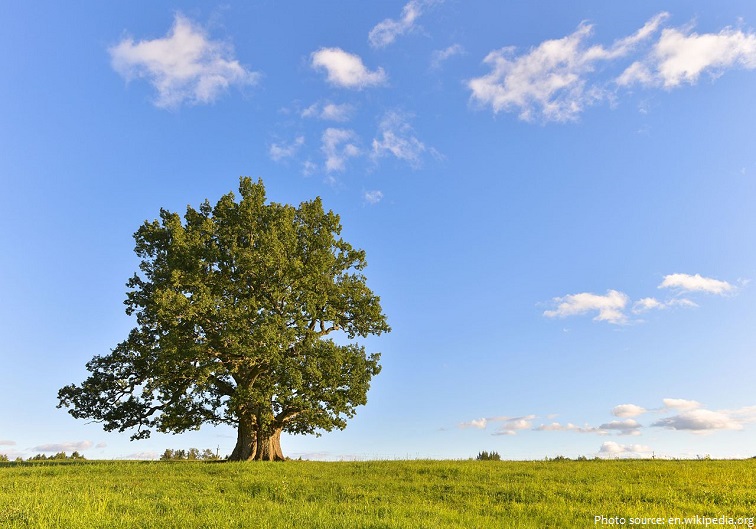Grown in Britain Week (12th – 18th October) is a national celebration of our woods and the societal values and products that they contribute. It’s a movement that aims to foster a sustainable wood culture and this year, will mark its third complete year.

So in celebration of our forests, we take a look at the top species of trees native to Britain and explore their unique uses and advantages.
Native/Non-native Trees
In the UK, there’s a mix of native and non-native trees but first, let’s get to grips with what these terms actually mean.
If a tree is described as ‘native’, it means that it has made its way to the UK naturally – not intentionally or accidently introduced by humans. In terms of trees and plants, these are species that recolonised the land when the glaciers melted after the last ice age and before.
As you might’ve guessed, any species that has been brought to the UK by humans are called ‘non-native’. This means that species would not naturally live here if it were not for us intentionally (or accidentally) bringing them here.
Some non-native species living in the UK include Douglas fir and Sitka spruce, which are used in forestry and others, such as copper beech and London plane, were brought here for their beauty.
The Tree-List
There are over fourty native trees recorded in the UK. The Woodland Trust have an intensive list that you can check out here, but we’ve picked out the best of the bunch below.

Alder
Alder thrives in damp, cool areas, so naturally, a perfect fit for our predictably-grim British weather. It’s characterised by its conical shape and dark, fissured bark. Its twigs have a light brown spotted stem, which turns red towards the top. It also produces catkins (a cylindrical flower cluster) that appear as tiny, cone-like fruits in winter.
Alder wood is very soft and porous and only durable if kept wet. A key advantage of alder is its ability to withstand rot underwater and as such, is popular in the construction of boats and water pipes.
Fun fact: When cut, the pale wood turns a deep orange, giving the impression of bleeding. As such, many people feared alder trees and thought it unlucky to pass one on a journey.

Ash
This grand tree is the third most common in Britain that often dominates our woodland. When fully grown, ash trees can grow to a height of 35m and often grow together, forming a light, domed canopy.
Ash is one of the toughest hardwoods – the wood is very springy and can withstand sudden shocks without splintering. As such, it is used for making tools, including hammers, axes, spades, hockey sticks and oars. Ash is an attractive wood and has proven popular for furniture use.
Fun fact: Back in the day, many pagans saw the ash as a healing tree and used it in ceremonies and treatments.

Cherry
The wild cherry is a popular, ornamental tree. Mature trees can grow to 30m and live for up to 60 years. The shiny bark is a deep reddish-brown with prominent cream-coloured horizontal line.
Cherry wood is often used to make decorative veneers and furniture. The wood is hard, strong and honey-coloured and when polished, creates an attractive, shiny brown colour.
Fun fact: When the bark is cut, a sticky resin exudes, which was thought to promote a good complexion, eyesight and help cure coughs.

Hawthorn
The common hawthorn is a deciduous tree, native in the UK and across Europe. It’s very similar to the UK’s other native hawthorn, the Midland hawthorn, so can be quite hard to tell apart.
It can reach a height of 15m and is characterised by its brown-grey, knotted bark and slender twigs, covered in thorns.
Hawthorn timber is often used in turnery and engraving. It also makes good firewood and charcoal, since it has a reputation for burning at high temperatures.
Fun fact: Hawthorn berries are thought to benefit the heart and to lower blood pressure.

Oak
Arguably the best-known and loved of British native trees, the English oak tree is not only famous for living to a ripe old age (around 500 years), it has immensely strong timber. It’s the most common tree species in the UK, especially in southern and central British deciduous woods
As one of the hardest and most durable types of timber, oak remains a popular wood for architectural beams. However, it takes up to 150 years before an oak is ready to use in construction.
Fun Fact: Acorns are not produced until the tree is at least 40 years old. Peak acorn fecundity usually occurs around 80 – 120 years.

Willow
There are several native willow species in the UK and many hybridise with one another, making them hard to identify – from goat to grey, crack to white.
Willows have an air of grace and beauty and can survive in the dampest of places, often found by riversides or water-logged gardens. They are prized for their slender, flexible stems. Larger stems were traditionally used to make small sailing boats and those with flexible stems can be used for basket-making and weaving.
Fun fact: The tree is enriched in folklore – the words ‘witch’ and ‘wicked’ are derived from the word willow.
And you?
If you’d like more information about Grown in Britain Week, you can check it out here or if you want to share how you’re celebrating this movement, do let us know on Twitter – we always love to hear from you.
And if you’re looking for timber for your next project, we offer both native and non-native species, so be sure to take a look at our product range or get in touch with our friendly team at International Timber today.
